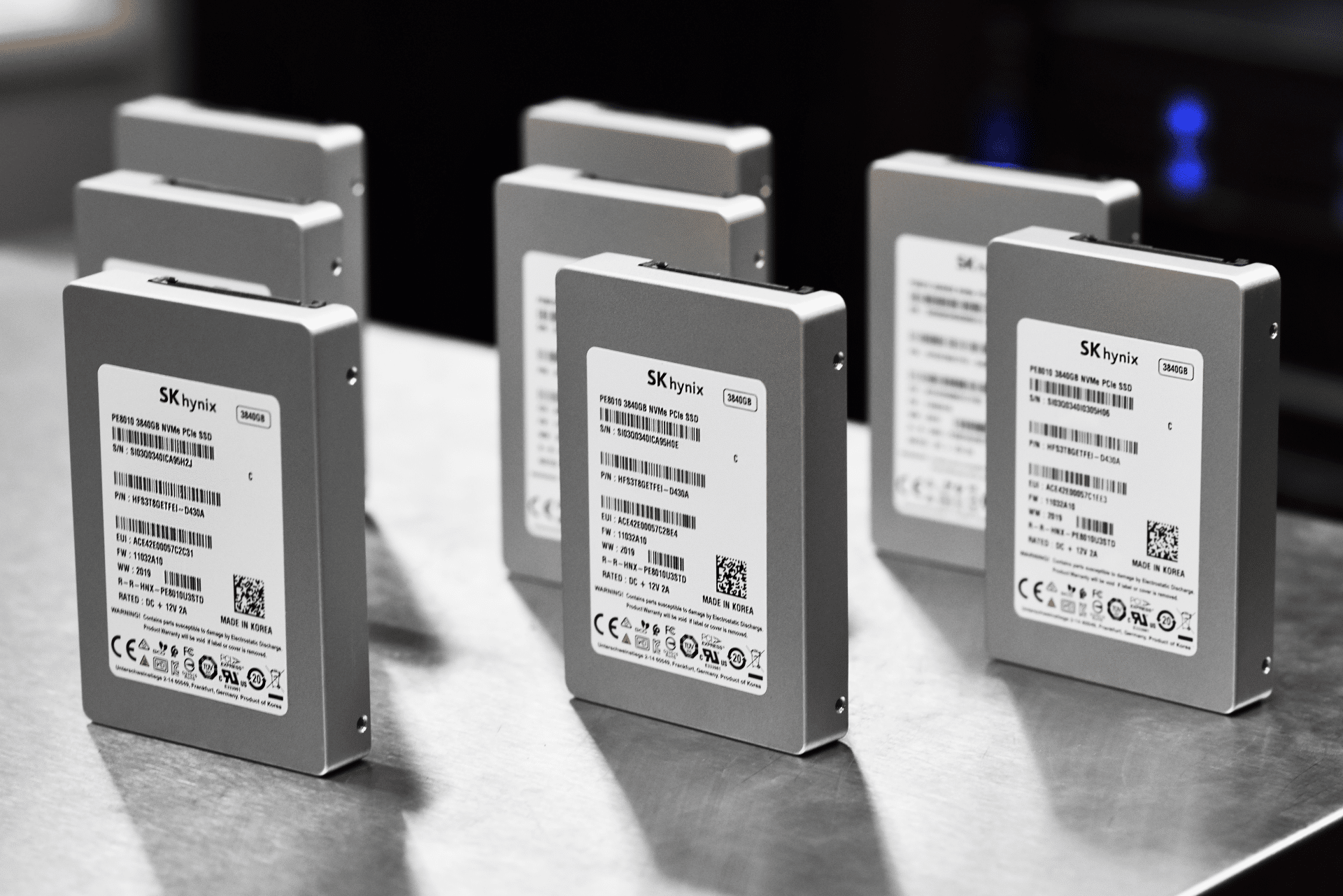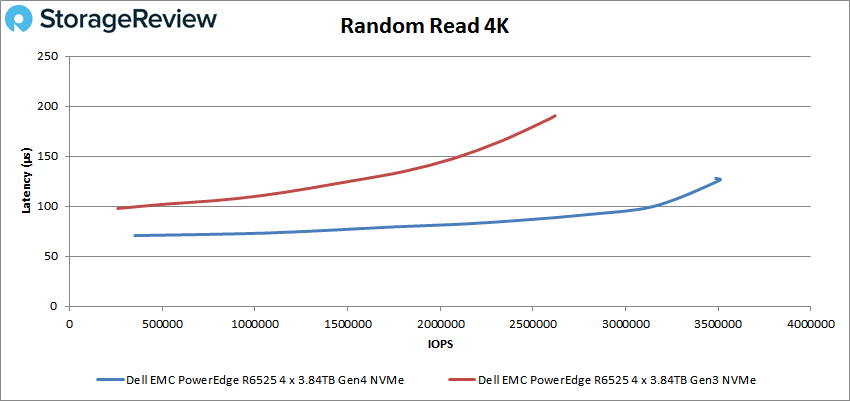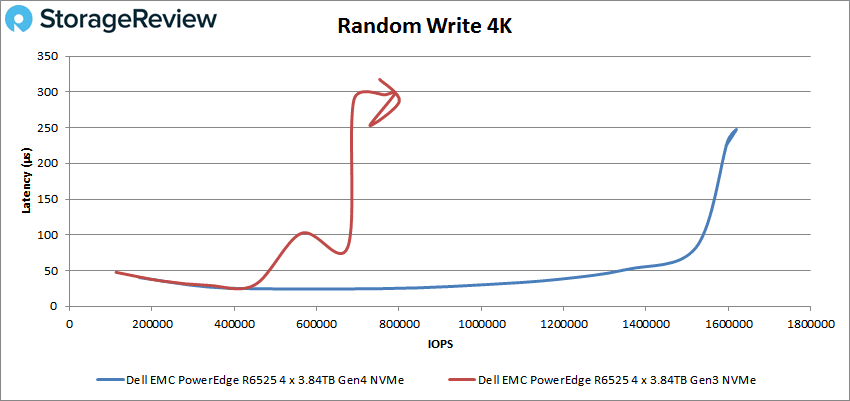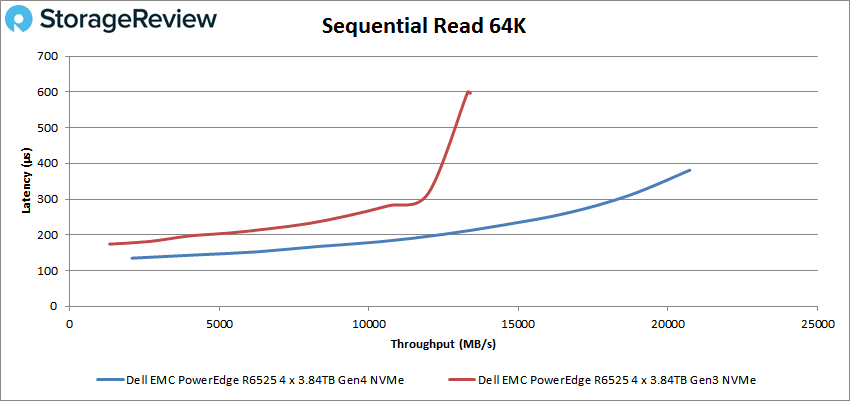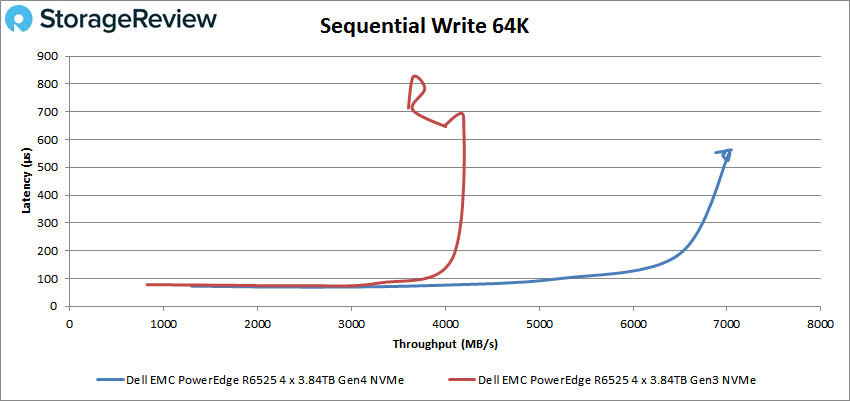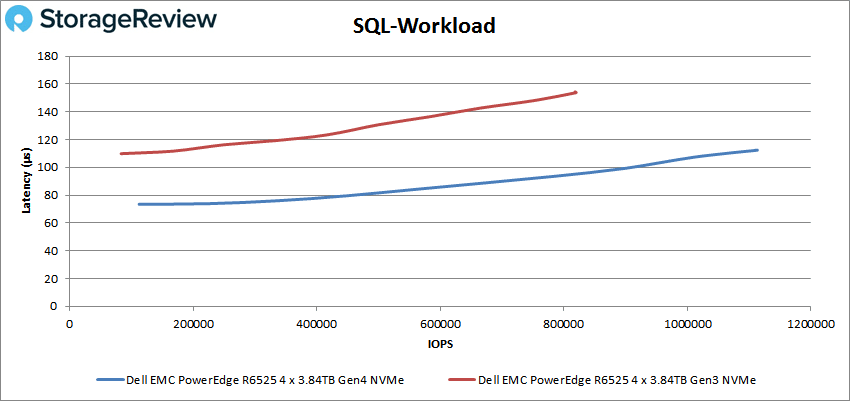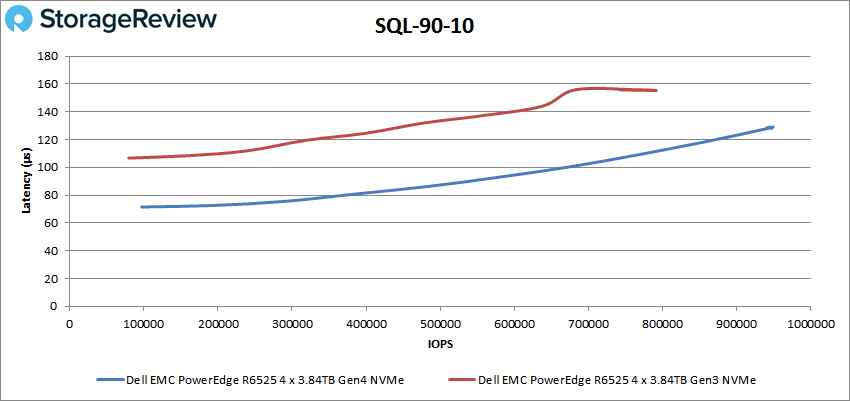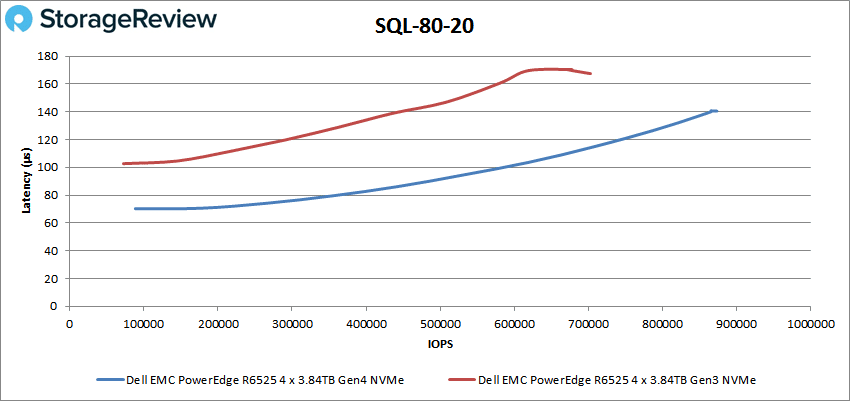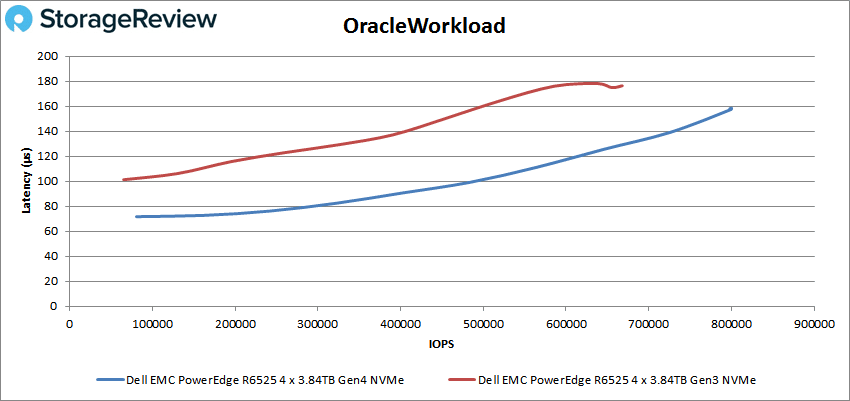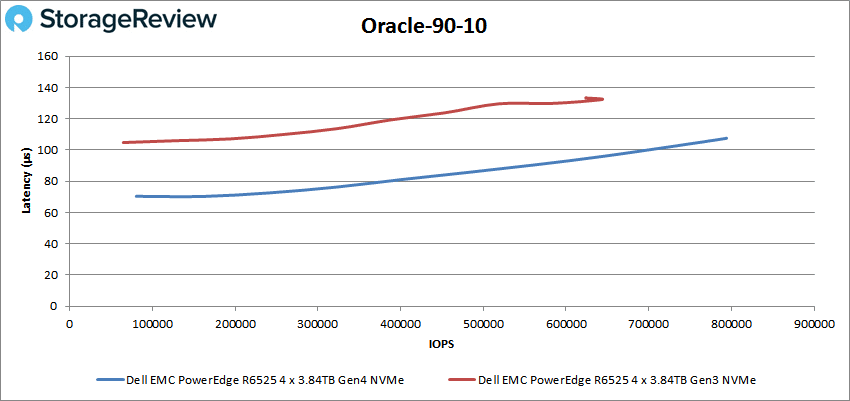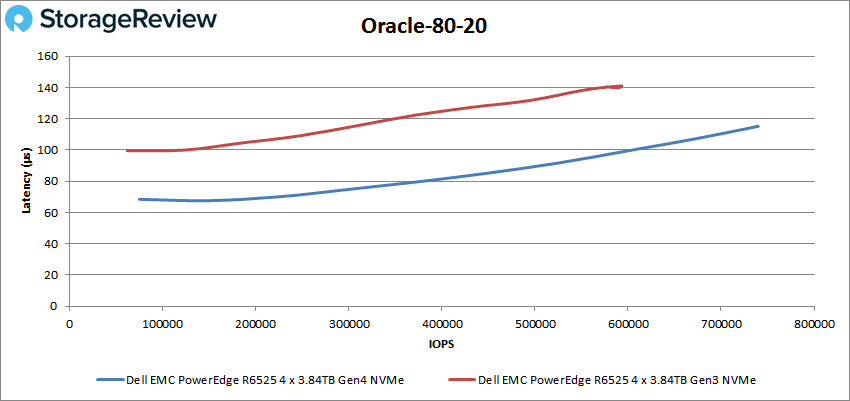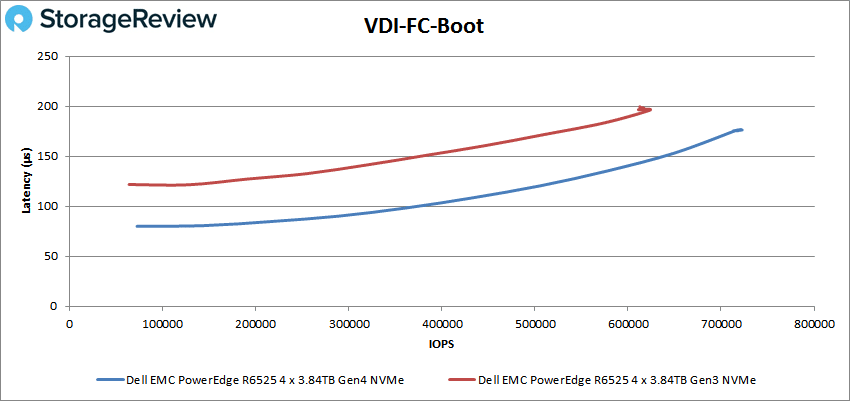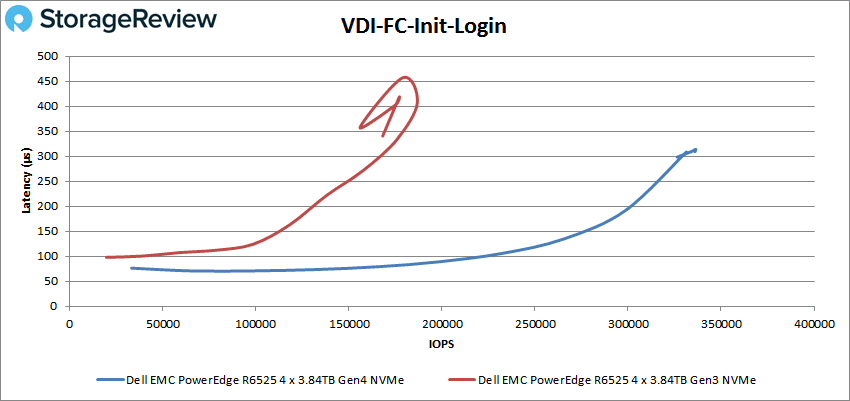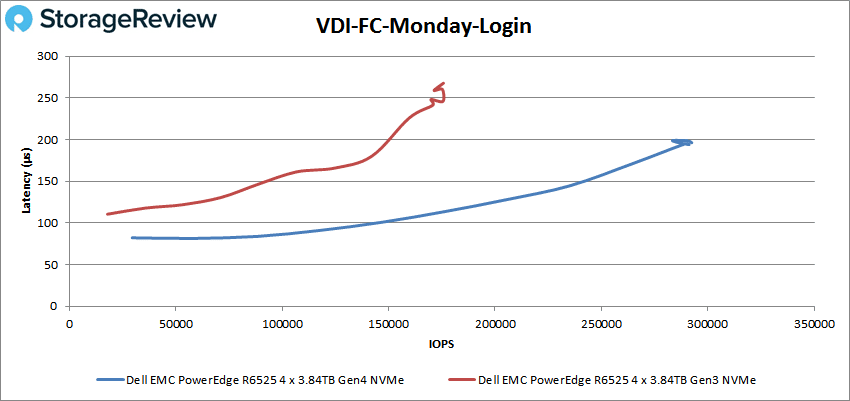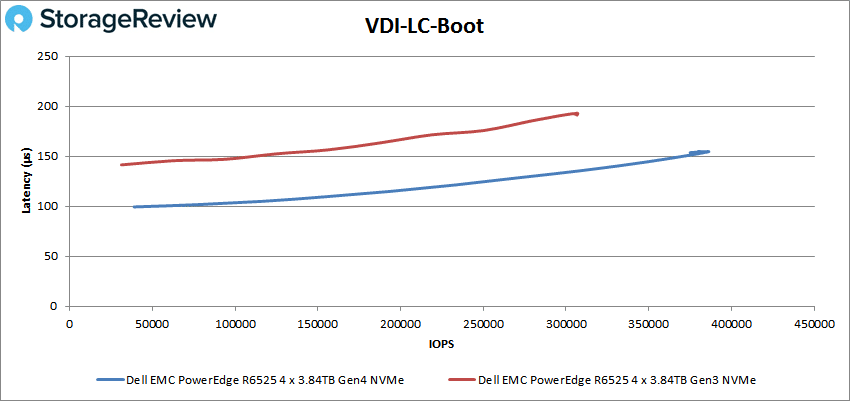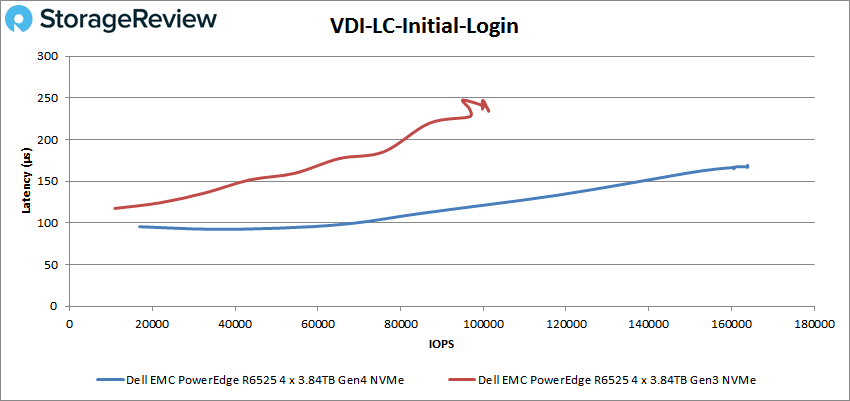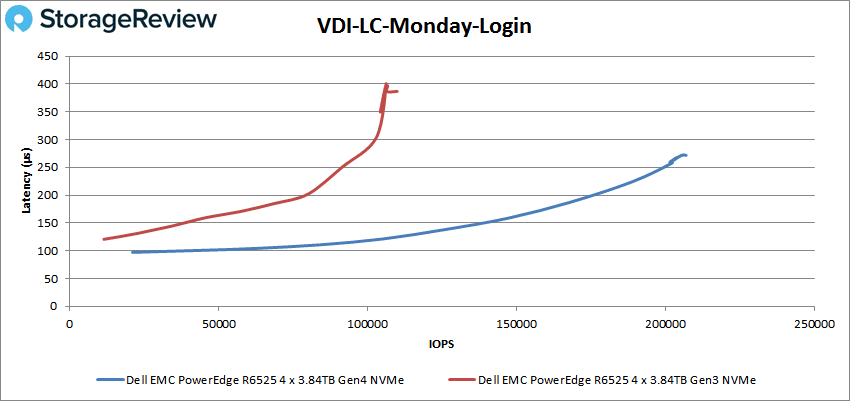A few weeks back we reviewed the Dell EMC PowerEdge R6525 Server. Overall, the 1U server was pretty impressive but lacked one thing that would really make it stand out, support for PCIe Gen4 storage end-to-end. Well, with the help of the people at Dell Technologies, we’ve corrected this and are reviewing the server again, this time with PCIe Gen4 storage.
A few weeks back we reviewed the Dell EMC PowerEdge R6525 Server. Overall, the 1U server was pretty impressive but lacked one thing that would really make it stand out, support for PCIe Gen4 storage end-to-end. Well, with the help of the people at Dell Technologies, we’ve corrected this and are reviewing the server again, this time with PCIe Gen4 storage.
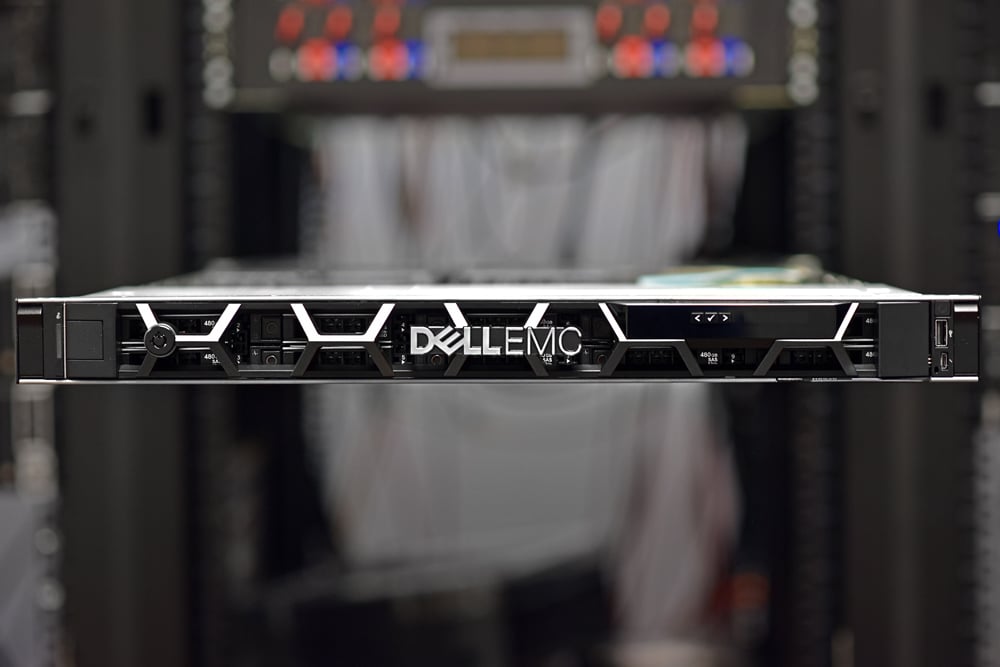
As we said previously, the go-to-market message was a bit confusing. Touting the device to support PCIe Gen4 and then not shipping it with built-in support was a mistake. However, Dell hooked us up with a field kit to swap out the front backplane as well as the cables to make it ready for the latest storage devices. It took our Lab Director about ten minutes to swap out three cables and the backplane and then we were good to go.
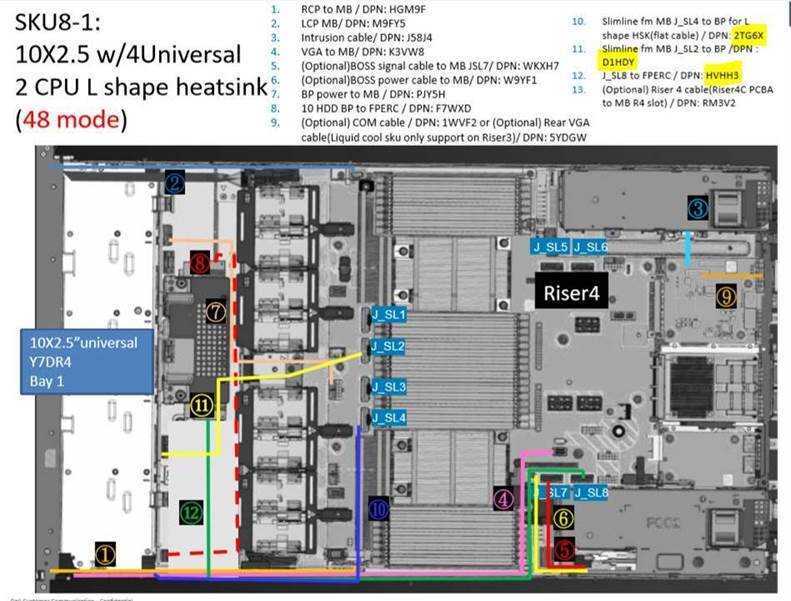
Since this is the same device with the same management, readers can refer back to the original review for specs, design and build, and management.
Dell EMC PowerEdge R6525 (PCIe Gen4) Performance
Dell EMC PowerEdge R6525 Configuration:
- 2 x AMD EPYC 7742
- 512GB, 256GB per CPU
- Performance Storage: 4 x 3.84Tb Micron 9300 (Gen3) or 4 x 3.84TB SK hynix PE8010 (Gen4)
- CentOS 8 (2004)
- ESXi 6.7u3
VDBench Workload Analysis
When it comes to benchmarking storage arrays, application testing is best, and synthetic testing comes in second place. While not a perfect representation of actual workloads, synthetic tests do help to baseline storage devices with a repeatability factor that makes it easy to do apples-to-apples comparison between competing solutions. These workloads offer a range of different testing profiles ranging from “four corners” tests, common database transfer size tests, as well as trace captures from different VDI environments. All of these tests leverage the common vdBench workload generator, with a scripting engine to automate and capture results over a large compute testing cluster. This allows us to repeat the same workloads across a wide range of storage devices, including flash arrays and individual storage devices.
Profiles:
- 4K Random Read: 100% Read, 128 threads, 0-120% iorate
- 4K Random Write: 100% Write, 64 threads, 0-120% iorate
- 64K Sequential Read: 100% Read, 16 threads, 0-120% iorate
- 64K Sequential Write: 100% Write, 8 threads, 0-120% iorate
- Synthetic Database: SQL and Oracle
- VDI Full Clone and Linked Clone Traces
With random 4K read, the server did much better with the PCIe Gen4 drives. Starting at 70.7µs and staying under 100µs until after breaking 3 million IOPS. The server went on to peak at 3,505,292 IOPS with a latency of just 127.4µs.
For 4K random write, the server showed tremendously better performance with PCIe Gen4 staying below 100µs in latency until over 1.5 million and a peak of 1,619,322 IOPS with a latency of 247.6µs. This is over double the peak of the Gen3 drives.
Next up is sequential workloads where we looked at 64k. For reads, the Dell EMC server saw a peak of 331,648 IOPS or 20.7GB/s at a latency of 381.2µs, about a 35% increase in performance at lower latency.
For 64K sequential write, the Gen4 storage in the server was able to peak at 112,704 IOPS or 7.02GB/s at a latency of 551.7µs.
Our next set of tests are our SQL workloads: SQL, SQL 90-10, and SQL 80-20. Starting with SQL, the Dell EMC R6525 loaded up with the Gen4 drives stayed below 100µs until around 900K IOPS and peaked at 1,113,419 IOPS with a latency 112.3µs.
For SQL 90-10 the Gen4 drives peaked at 947,597 IOPS with a latency of only 128.9µs.
SQL 80-20 continued to show much stronger performance with the Gen4 drives with a peak of 873,301 IOPS at a latency of 140.5µs.
Next up are our Oracle workloads: Oracle, Oracle 90-10, and Oracle 80-20. Starting with Oracle, the R6525 with the Gen4 drives stayed below 100µs until about half a million IOPS and went on to peak at 799,687 IOPS with a latency 157.5µs.
For Oracle 90-10 the Dell EMC server peaked at 793,994 IOPS at a latency of 107.5µs.
With Oracle 80-20 we saw a peak of 739,968 IOPS with a latency of 115.1µs. Over 140K IOPS improvement at a lower latency.
Next, we switched over to our VDI clone test, Full and Linked. For VDI Full Clone (FC) Boot, we see sub-100µs latency performance up until about 400K IOPS and a peak of 722,683 IOPS at a latency of 176µs. Over 100K IOPS better with Gen4.
VDI FC Initial Login had the Gen4 really wallop the Gen3 with a peak performance of 335,994 IOPS at 309.2µs versus 187K IOPS at 407.4µs
VDI FC Monday Login showed another impressive leap with the Gen4 setup peaking at 292,466 IOPS and 196.2µs compared to the Gen3’s 175,193 IOPS and latency of 260.3µs.
Switching to VDI Linked Clone (LC) Boot, the Dell EMC R6525 with Gen4 peaked at 385,279 IOPS with a latency of 154.6µs.
Again, we saw a big difference in Initial Login, this time the Gen4 hitting a peak of 163,938 IOPS at 166.7µs compared to the Gen3’s 101,301 IOPS with a latency of 234.4µs.
Finally, we look at VDI LC Monday Login where the Gen4 loaded server peaked at 207,004 IOPS with a latency of 271.8µs, nearly 100K over the Gen3.
Conclusion
The Dell EMC PowerEdge R6525 is a powerful little 1U server that has dual AMD EPYC CPUs. While the server is ready to run PCIe Gen4, our early build didn’t come out of the box that way. Fair enough, with the help of Dell and a field kit, we made it ready for the latest storage technology. The process was easy enough, and after a few minutes, we were ready to test.
For benchmarking we ran our VDBench Workload analysis and saw quite an uptick in performance between the two generations of PCIe technology. Highlights include 4K read of 3.5 million IOPS, 4K write of 1.6 million IOPS, 64K read of 20.7GB/s, and 7.02GB/s in 64K write. This represents increases in performance of 34.6%, 100%, 54%, and 67% respectively.
With our SQL tests, we saw peaks of 1.1 million IOPS, 948K IOPS in SQL 90-10, and 873K IOPS in 80-20 or an improvement of roughly 34%, 32%, and 24% respectively. With Oracle the server we saw peaks of 800K IOPS, 794K IOPS for 90-10, and 740K IOPS for Oracle 80-20, representing improvements of 20%, 23%, and 25% respectively. With VDI Full Clone results we saw peaks of 723K IOPS boot, 336K IOPS Initial Login, and 292K IOPS Monday Login. VDI Linked Clone showed peaks of 385K IOPS boot, 164K IOPS Initial Login, and 207K IOPS Monday Login.
PCIe Gen4 has lots of performance promises and with the field kit for the Dell EMC PowerEdge R6525, we were able to realize them. The increase was so great in some cases we saw roughly 100% improvement. Systems ordered today will come with Gen4 capable backplanes. Looking at the numbers, the jump up in performance is a worthy investment for performance-hungry applications.
Engage with StorageReview
Newsletter | YouTube | Podcast iTunes/Spotify | Instagram | Twitter | Facebook | RSS Feed

